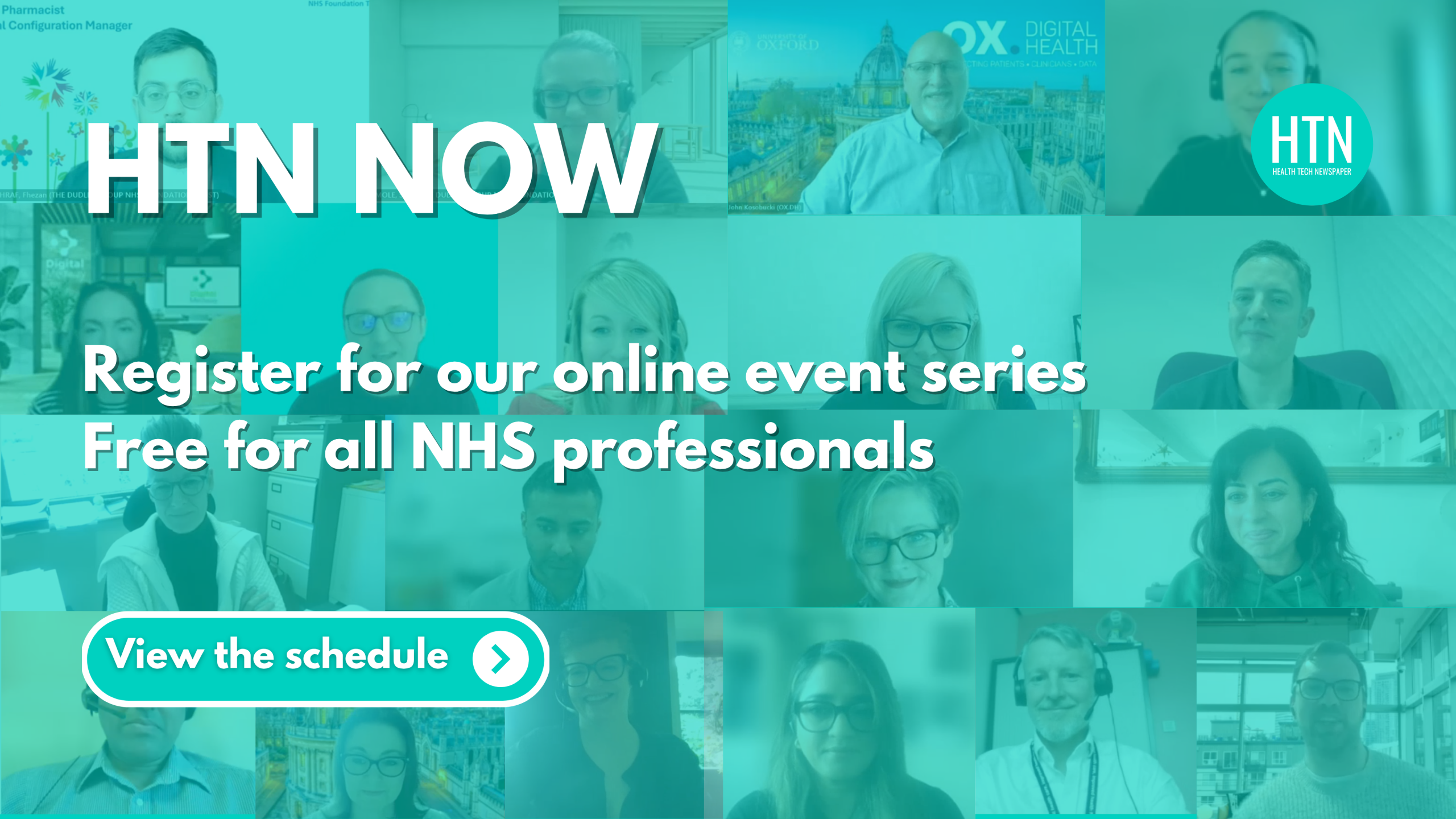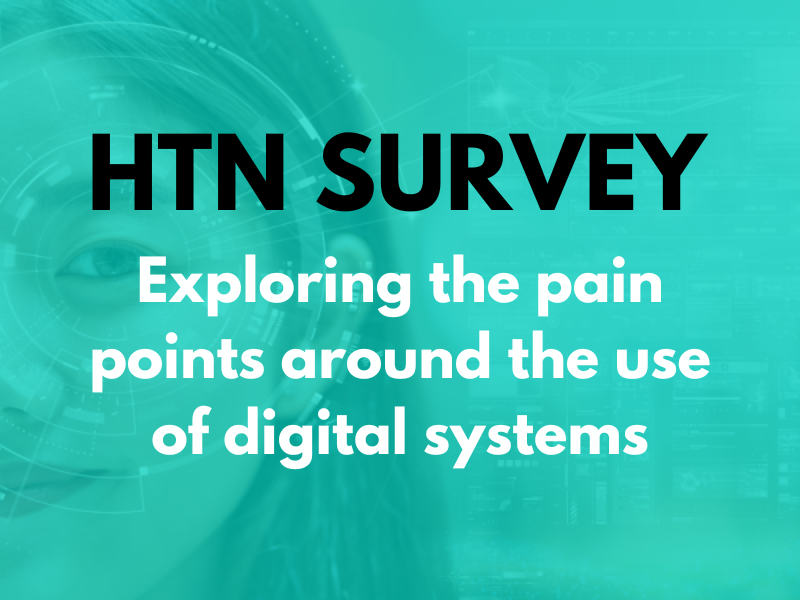NHS Tayside has released a new Digital Health and Social Care Strategy for 2022-2027, aiming to help people live longer, healthier, and happier lives using digital health technology.
The strategy opens with a foreword breaking down the rationale of developing a digital strategy. It explains: “Digital strategy isn’t just about building exciting technology, it’s about the needs of real people and working together to find out how technology can support them.”
It goes on to expand on the vision and aims behind the strategy: “We have a vision of people being able to take control of their care, making informed decisions and interacting with practitioners in the way that works for them.” It also explains that it wants to better support staff with the information they need to deliver better care, which will in turn free up more time for staff to spend with patients.
It acknowledges that “just as digital has the power to empower people, it can also exclude people”. To address this, the strategy details how it won’t be taking a ‘one size fits all’ approach to using digital technology but will individualise care and approaches to technology use to reduce health inequalities and digital exclusion.
The foreword finishes by summarising the aims of this new strategy saying, “We want this digital strategy to bring together the NHS, local authorities, third sector organisations, academia, the private sector and the public to make the vision not only realistic but also achievable.”
The strategy moves on to discuss what the next five years may start to look like for digital care in Tayside. It says, “In NHS Tayside, digital technology has the opportunity to transform every aspect of care”, explaining that it aims to put more control of personal health into the hands of the residents, which also means providing patients with the relevant support and information.
The strategy lays out plans for the next five years that will “help put the population in control of their own health and social care journeys”. It will also consider accessibility issues when designing the digital solutions, accommodating different levels of digital literacy, disabilities, and device ownership.
To help with the implementation of digital tools and solutions, the strategy lays out principles to form the NHS Tayside digital charter, which “is about putting people at the centre of decisions we make about digital technology.”
These principles are:
- “We won’t leave anyone behind” as the health board moves towards more digital-centred solutions, it will repeatedly address access or experience with digital technology.
- They will provide staff with proper training and support so that they can continue to use the new digital technology to provide a higher quality of care.
- The health board will also look at and address different healthcare needs and will continue to work in partnerships and collaborations to address them properly with the attention and details they need.
- When designing the new digital technology and solutions, the strategy says the health board “will put security, privacy and patient safety first.”
- The health board will “take responsibility as a whole organisation for digital technology, helping our colleagues and patients make the best use of it.”
- It will also make sure that existing technology and resources are being used more effectively.
- The strategy recognises the value of data and evidence-based decision-making; the health board has committed to its use when making policies and decisions.
- The guide also recognises the importance of working with regional and national groups. It acknowledges that it needs to “take the lead when we need to.”
- Alongside this, it also recognises the importance of collaboration with public and private sector partners when developing and creating solutions and using digital technology.
- The final principle is to “design digital technology alongside the people that will actually use it”.
These ten principles will influence NHS Tayside as it works over the next five years to implement its digital strategy. The strategy has also recognised the five key areas in which digital technology will have the biggest and most positive impact; these are explored in more depth below.
Improving decision making
The strategy explains that the health board will “provide the right data at the right time to care providers to help improve the accuracy and speed of their diagnoses”. It also explains that it will develop analytical tools that will continue to help staff to assess patients and give the best course of action and assists in their day-to-day decision-making when dealing with patients.
It moves on to detail why improving decision-making will improve the outcomes for health and social care patients by “(facilitating) more effective person-centred decisions” by allowing more providers access to relevant data at the appropriate times during the patient journey. The strategy states that this “will be augmented by digitally assisted analysis which will help health and care teams make decisions earlier in the patient journey.”
It also acknowledges that more enhanced decision-making will be applicable to capacity planning and operation management services across the NHS, using historic data to identify trends in demand, manage capacity and make decisions based on the potential forecasted levels of service demands.
The strategy also acknowledges that when using digital technologies, they “need to make sure data is captured, shared, interrogated and accessed in the right ways” and further explains that data standardisations will be ‘fundamental’ to implementation decision-making tools, so data can be analysed and compared in a more consistent way. The health board also plans to develop support tools that will then be able to process larger volumes of complex data.
The strategy provides a small breakdown of what technologies it plans to deliver in this key area, which includes a consolidated electronic patient record (EPR) view, population health and patient cohort management solution.
In this area, the strategy concludes that “growing the impact of our current data and analytics capabilities requires organisational as well as technological change”. It adds that the health board will do this by growing skills and fostering collaboration within NHS Tayside partners, to ensure the capabilities for data and analytics management can be applied across the services areas it can have the most positive impact.
Helping staff to do their jobs
The second key area identified by the strategy explains that “digital services aim to make life easier for our staff by delivering a seamless and convenient experience, enabling them to do the right thing at the right time.” It adds that at the core of the strategy and the health board, the approach to digital services for staff prioritises the amount of time care providers can spend with their patients.
“By designing experiences that are user-friendly and intuitive digital technology, we will aim to minimise ‘time spent on device’ for staff,” the strategy comments. This will also improve the quality of care delivered as it will minimise the risks of human error.
It examines how digital interventions can help staff working across multiple locations access all the relevant information they will need to consistently deliver high-quality care to their patients. Providing digital services in a “positive way impacts our staff’s day-to-day life”; it summarises that it is expected to improve staff well-being, retention, and development.
“Staff will be instrumental – throughout the design and development process, to ensure they are addressing their needs,” the strategy states. It goes on to acknowledge that “digital solutions cannot succeed in isolation”, and details that working in tandem with developing digital applications and tools, the health board will also look at redesigning the staff processes and journeys. This is to ensure that the operations are kept updated and in pace with the continuing digitisation of the services.
The technology to be used in this area will begin with targeting tasks and routines that are “routine, repetitive and time intensive for our staff”. It will develop a digital delivery model that will reduce the need for manual input and can be used across multiple locations and specialities.
The strategy highlights that the digital tool considered to be most important is a consolidated digital view of patient data, bringing together sources of patient data from across primary, secondary, community and social care. This will allow health and care teams to access the necessary information on a single digital platform that can then be used to make fully informed decisions when handling patients.
One of the long-term aims for the area will be to build on the consolidated patient records to allow clinicians’ teams to monitor patients more remotely, allowing more flexible data collecting and freeing up more clinicians’ time as patients will be able to monitor and submit data from their own homes.
Empowering patients
Supporting Tayside patients to become more empowered with their own healthcare is another key area in the strategy. This is intended to give patients the access and knowledge they need “to make more informed decisions about their care, making them feel included and in control, building confidence in knowing how, when and where to access the care they need.”
It is hoped that this will result in improved outcomes with the strategy noting that “real-time and consistent awareness of their health status is likely to encourage patients to make healthier choices” and that visibility of vital metrics and new ways to engage with their own providers will give patients more accessibility to the right care they need.
The health board will free up clinician time by allowing patients to capture their own health data. The strategy shares the hope that “as more and more patients adopt this digital care model, we anticipate a decline in the footfall in hospitals, which will, in turn, free up capacity and staff time and enabling them to focus on areas of greatest need.”
To deliver in this area, the health board makes a commitment to education with plans to invest in training programmes and engagement campaigns, to give carers and patients a better and clearer understanding of their own responsibilities and that of their healthcare providers.
The health board will also educate patients to “understand their diagnosis and treatment options available to them at any given point in time, and in the case of ongoing treatment or consultation, where they are in the process.”
The strategy reaffirms the health board commitment to healthcare quality, enabling proxy access to patients’ data to provide ‘digital navigators’ with the tools to assist patients who cannot access digital services or lack the knowledge to do so.
In terms of the technologies to be used, the strategy highlights a ‘digital self-service’ tool which will allow more initial tasks to be done digitally and remotely; this includes booking appointments checking in and video consultations. The health board also wants to expand on the video consultation capabilities for patients, to remotely see and receive care from clinicians without needing to physically be there.
Looking to the future, the health board intends to build up remote monitoring capabilities, to allow more monitoring and data capture to be done at the patient’s home. This will “detect changes in condition and proactively provide health and social care interventions.”
Connecting services
Here, the strategy acknowledges that “moving between different types of care can create challenges for patients and the health and social care providers that support them.” These challenges can mean that information is lacking, resulting in patient risks being missed and delayed care overall. The health board has committed to ensuring its “patient-facing tools bring together the right parts of their care journey, and that they are not left with a confusing set of disconnected apps and services to navigate.”
A primary issue identified is that clinicians do not always have access to the right information they need to make informed decisions for their patients, when those patients are moving between services. This is largely due to “the information in solos that exists between the various patient record systems in use.”
By digitising patient information, the health board aims to provide “end-to-end visibility of health and social care data regardless of service provider” which is expected to significantly impact the level of risk of error by giving a holistic view of patient data and records.
To facilitate linking services together, the strategy explains that “we will not focus on technology and build pathways around it, instead we will focus on designing pathways and use digital technologies to improve them”.
Planned technologies include a strategic integration platform allowing for more systems to be linked so that they can exchange data, for the patients using more than one service in NHS Tayside.
It also has plans to provide a single view of patient records, which will cover all services and “serve as the foundation that will support the access and use of data across different care services.”
In addition, there are plans for a single health and social care summary and a shared health and social care portal that will give access to the more relevant information and systems. Over time, patient-facing applications will be integrated into the connected services system; this will allow “patients also have a closer connection to their health and social care journey.”
Building closer partnerships
The final key area identified by the strategy aims to bring together more working relationships between the NHS Tayside and other sectors, including delivery partners and academia, to continually develop, deliver and implement digital technology together.
It is hoped that by improving the partnerships in the health and care sectors, “the technology we develop can be successfully deployed by all delivery partners. We will build in a wider range of experiences and perspectives.”
It goes on to explain the approach that the health board will take over the next five years: “we will empower the existing forums we have with delivery partners to take decisive action on digital technology.”
The health board is also to deepen the involvement of academia, to develop more opportunities for incorporating digital tools and methods to enhance medical research and the development of digital solutions; this will include use of artificial intelligence to support advanced decision making.
The strategy summarises that NHS Tayside has created an expansive well of data and knowledge which is of “immense value to the public and private sector”. Going forwards, the health board will explore ways to leverage this with existing NHS Tayside assets to further opportunities and unlock more potential for the service and partners.
The full guide can be read here. NHS Tayside have also released a video explaining the aims for the strategy which can be viewed below.





